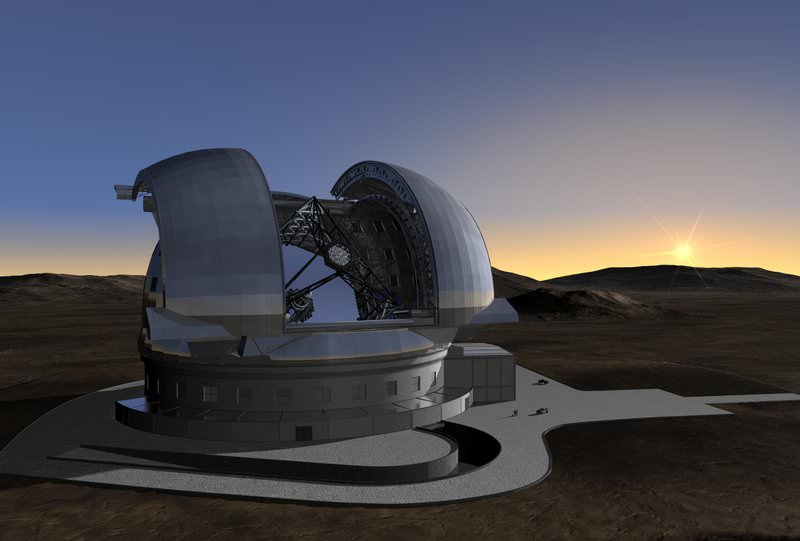The European Southern Observatory (ESO) is planning on building a massive – and I do mean massive – telescope in the next decade. The European Extremely Large Telescope (E-ELT) is a 42-meter telescope in its final planning stages. Weighing in at 5,000 tonnes, and made up of 984 individual mirrors, it will be able to image the discs of extrasolar planets and resolve individual stars in galaxies beyond the Local Group! By 2018 ESO hope to be using this gargantuan scope to stare so deep into space that they can actually see the Universe expanding!
The E-ELT is currently scheduled for completion around 2018 and when built it will be four times larger than anything currently looking at the sky in optical wavelengths and 100 times more powerful than the Hubble Space Telescope – despite being a ground-based observatory.
With advanced adaptive optics systems, the E-ELT will use up to 6 laser guide stars to analyse the twinkling caused by the motion of the atmosphere. Computer systems move the 984 individual mirrored panels up to a thousand times a second to cancel out this blurring effect in real time. The result is an image almost as crisp as if the telescope were in space.
This combination of incredible technological power and gigantic size mean that that the E-ELT will be able to not only detect the presence of planets around other stars but also begin to make images of them. It could potentially make a direct image of a Super Earth (a rocky planet just a few times larger than Earth). It would be capable of observing planets around stars within 15-30 light years of the Earth – there are almost 400 stars within that distance!
The E-ELT will be able to resolve stars within distant galaxies and as such begin to understand the history of such galaxies. This method of using the chemical composition, age and mass of stars to unravel the history of the galaxy is sometimes called galactic archaeology and instruments like the E-ELT would lead the way in such research.
Incredibly, by measuring the redshift of distant galaxies over many years with a telescope as sensitive as the E-ELT it should be possible to detect the gradual change in their doppler shift. As such the E-ELT could allow humans to watch the Universe itself expand!
ESO has already spent millions on developing the E-ELT concept. If it is completed as planned then it will eventually cost about €1 billion. The technology required to make the E-ELT happen is being developed right now all over the world – in fact it is creating new technologies, jobs and industry as it goes along. The telescope’s enclosure alone presents a huge engineering conundrum – how do you build something the size of modern sports stadium at high altitude and without any existing roads? They will need to keep 5,000 tonnes of metal and glass slewing around smoothly and easily once it’s operating – as well as figuring out how to mass-produce more than 1200 1.4m hexagonal mirrors.
The E-ELT has the capacity to transform our view not only of the Universe but of telescopes and the technology to build them as well. It will be a huge leap forward in telescope engineering and for European astronomy it will be a massive 42m jewel in the crown.

